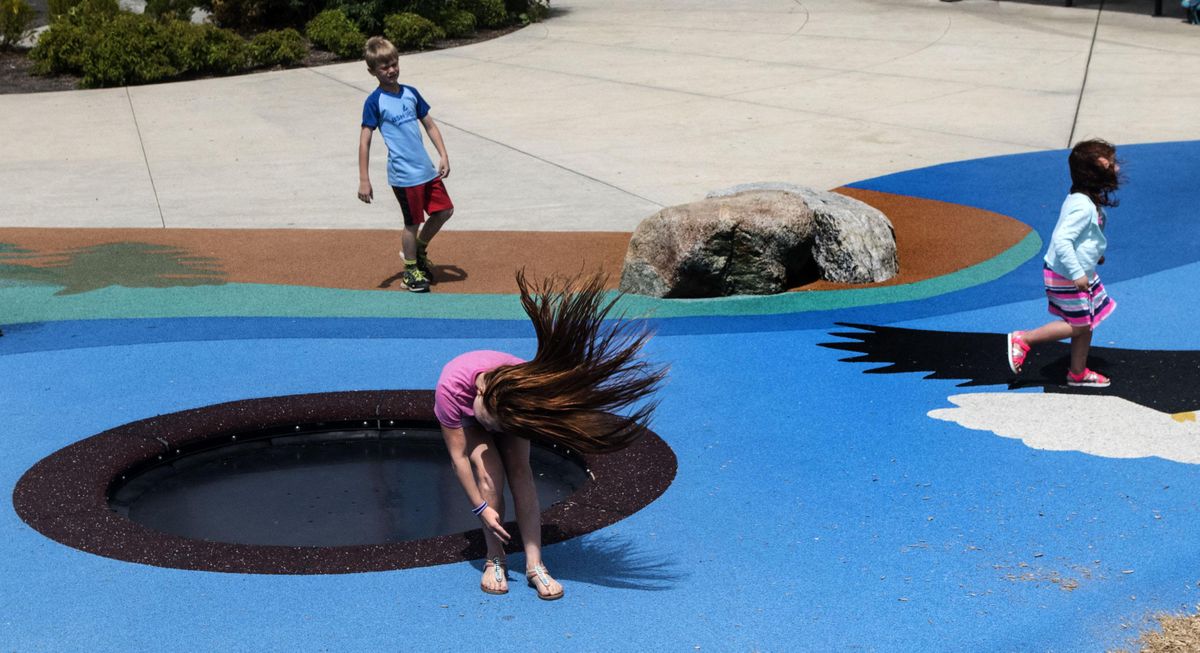Spokane’s playgrounds are nearing the end of their life cycle, but new designs are on the horizon

A voter-approved bond in 1998 paid to remake about half of the city of Spokane’s playgrounds.
Nearly all of them are still entertaining kids.
But playgrounds in Spokane usually last at least 15 years, said Al Vorderbrueggen, Spokane parks operations director.
“You’re starting to see them at the end of their life cycle for sure,” he said.
Vorderbrueggen said despite the age of some of the playgrounds, they remain safe. The park department has a certified playground inspector who checks each playground once or twice a month for safety issues.
“They’re definitely safe and available to the public,” Vorderbrueggen said.
There are 87 developed parks in the city of Spokane’s system; there are 61 playgrounds in those parks, said Nick Hamad, Spokane parks’ landscape architect.
Replacing a playground usually costs between $75,000 and $150,000, he said. The park department’s main budget usually includes replacement of one playground a year, but sometimes the department gets grant money to develop more. The recent tax approved by voters to upgrade Riverfront Park will pay for a new playground there.
Vorderbrueggen said he expects the park department to begin planning to boost playground replacement in the next few years to deal with the aging infrastructure from the 1998 bond.
Hamad is working to design new playgrounds at Wildhorse Park in northeast Spokane, Dutch Jake’s Park in the West Central neighborhood and Riverfront Park.
The Riverfront Park playground, to be on the river’s north bank, will be the largest in the system, probably larger than an acre, Hamad said. Most the city’s playgrounds are closer to a quarter acre.
Its design, which includes water and landscape features, is tailored to be an outdoor learning experience and will tell the story of the floods of the past Ice Age that formed the geology of the Spokane region.
Generally, Spokane’s playgrounds have two parts, one geared to 2- through 5-year-olds and bigger equipment for 5- though 12-years-olds.
There’s more to designing a playground than ordering equipment.
“We try to always match the feel of the park with the equipment,” Hamad said.
Officials also examine the population of a neighborhood to determine if equipment should be more geared to certain age groups. And more effort is being made to make playgrounds more accessible to children with sensory or mobility impairments.
“Providing accessible routes to the playground is important to us,” Hamad said.
Looking for something different?
Every playground has its charms, but a few regional attractions stand out for their characteristically unconventional designs.
Nearly a decade in the making, the Discovery Playground in Spokane Valley offers a “multi-sensory” experience for children of all ages and abilities, with features that include wheelchair-accessible paths, hanging chimes, fragrant plants, textured walls and trampolines. Designed specifically to include those with disabilities, the park is a popular spot in all weather and prompted similar design elements to be added to McEuen Park, which boasts Coeur d’Alene’s largest playground.
The playground has, unfortunately, been the subject of theft and vandalism over the years – statuary of salmon, an inchworm and a couple of eggs have been pilfered or uprooted – but the spot remains one of the city’s more unique play places.
For a more conventional but no less satisfying experience, swing ’round to Manito Park’s lower playground, where a webbing of climbable ropes offers a more unstructured – but no less physically challenging – environment than the typical, rigid forms typical to city parks.
Named the Pentagode M Castle, the playground was designed by German company Berliner and completed in 2016, replacing a wooden set in the same spot that had begun to rot. It was created as a test case, city officials told The Spokesman-Review in 2016, to see if other Berliner models could be erected around Spokane.
The general philosophy of the design – which centers around one of mankind’s most basic tools, the rope – is that versatility comes chiefly through simplicity, and that imagination can provide the context that explicit symbols do not: a rope can be a ship’s rigging, a liana vine, a prison or a castle.